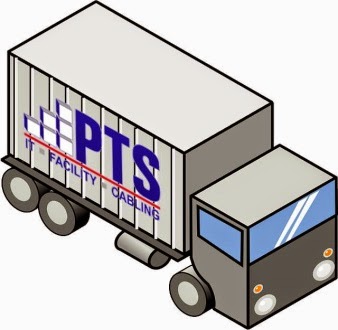In my post “Tips for Handling Your Data Center Relocation,” I discussed some basic strategies for streamlining a data center move. Since then, I’ve received a few requests for more insight into handling the data center relocation process. In this post I’ll address whether it’s necessary to call in the pros and how to pick a data center moving company.
While in some cases the in-house team can handle the move themselves, most enterprises need a little extra help. I liken it to attempting a plumbing project on your own. The tools you need to do the job most effectively are so specialized and you rarely have them – in most situations, it would take you three times the amount of effort to do the job versus the professional. With a data center relocation project, having the right packing materials, rigging equipment, trucks, and so forth are all necessary for a job well done.
Here’s an overview of how to find and hire a company to help with the data center relocation process:
Step 1: Finding a data center moving company.
Nearly every area has a company that specializes in relocating computer equipment. They can be found in the Yellow Pages, via an online search, or by asking for referrals from colleagues. The hard part is making sure you’ve found a qualified company that specializes in data center moves. Checking references is vitally important. A general rule of thumb I’ve seen people use is “The bigger the companies they work for, the better the moving company is,” but this isn’t always the case.
Step 2: Checking qualifications.
When lost or damaged equipment can mean downtime and escalating costs, the need to choose carefully is clear. The most important thing to look for is experience. How many years has the data center relocation company been in business? What’s the combined experience of their team? Have they worked on projects of similar scale to your own?
Ask specific questions to make sure they perform these services on a regular basis. What are the company’s best practices and proven methodologies? What resources and support does the company offer? How would they coordinate all aspects of the move from start to finish?
Remember that the moving company is only one part of the integrated team for an effective relocation. Be sure to involve key stakeholders in the process, including your IT, business and facilities staff as well as third-party vendors. The project team should include:
- your internal IT and facilities staff,
- an overall project manager (internal or external),
- an IT services company to assist in the marking, tagging, un-cabling, un-racking, re-racking, and re-cabling of all IT infrastructure
- a computer room design firm to verify the power and cooling capacity on the other side.
For a more detailed guide to hiring a firm, download my white paper, “Tips for Hiring a Data Center Consultant.”
(Next post: Establishing an overall plan for your data center move…)
 So you've made the decision to relocate your data center operations to a new facility. Perhaps you are moving the operations to a data center colocation facility because it was going to be too expensive to upgrade your in-house data center facility, or perhaps your organization prefers an operational expense financial model over spending capital expenditures (cash) today. Or maybe your company is simply relocating its corporate headquarters, including the computer room.
So you've made the decision to relocate your data center operations to a new facility. Perhaps you are moving the operations to a data center colocation facility because it was going to be too expensive to upgrade your in-house data center facility, or perhaps your organization prefers an operational expense financial model over spending capital expenditures (cash) today. Or maybe your company is simply relocating its corporate headquarters, including the computer room.









